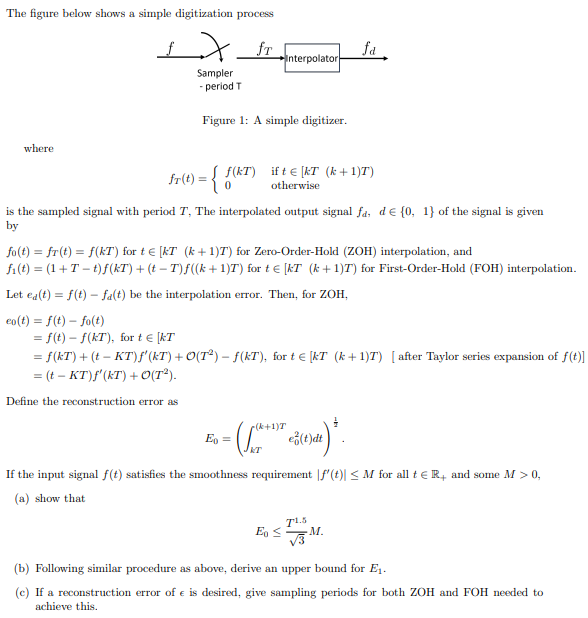Home /
Expert Answers /
Electrical Engineering /
the-figure-below-shows-a-simple-digitization-process-figure-1-a-simple-digitizer-where-ft-t-pa191
(Solved): The figure below shows a simple digitization process Figure 1: A simple digitizer. where fT(t)={ ...

The figure below shows a simple digitization process Figure 1: A simple digitizer. where is the sampled signal with period , The interpolated output signal of the signal is given by for for Zero-Order-Hold (ZOH) interpolation, and for for First-Order-Hold (FOH) interpolat Let be the interpolation error. Then, for ZOH, Define the reconstruction error as If the input signal satisfies the smoothness requirement for all and some , (a) show that (b) Following similar procedure as above, derive an upper bound for . (c) If a reconstruction error of is desired, give sampling periods for both and needed to achieve this.